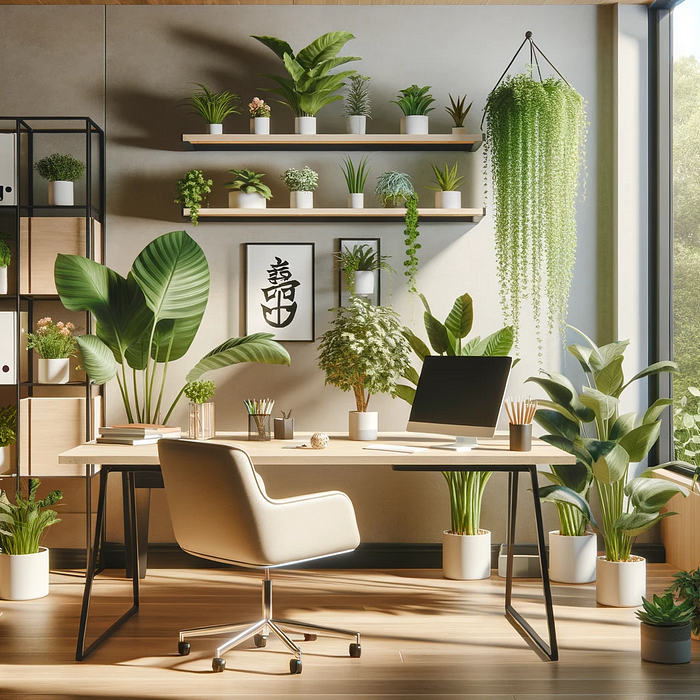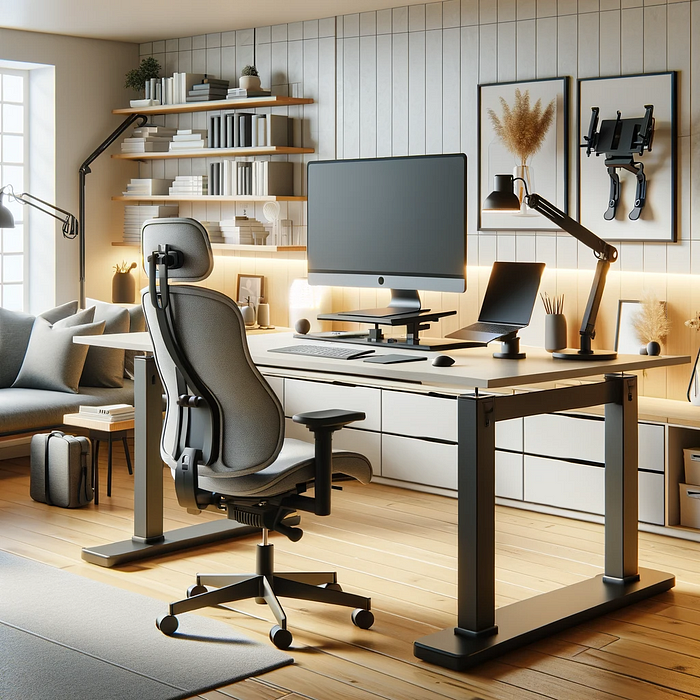Active Desk Workers With Back Pain
Discover The New Way to Bid Farewell
to Back Pain and Melt Years Off Your Body
Active Desk Workers With Back Pain
Discover The New Way to Bid Farewell
to Back Pain and Melt Years Off Your Body

Welcome, remote warriors! I’m Michael Jones, here to navigate you through the art of ergonomic office design and Feng Shui principles for your home office. Let’s inject some fun into creating a workspace that’s not just a corner in your home but a sanctuary of productivity and zen!
Consider your desk the heart of your home office. In Feng Shui, its placement is akin to sitting on a throne — you should command the space, not be hidden away. Ensure your desk faces the door but isn’t directly in line with it, balancing Feng Shui energy flow with ergonomic positioning. This setup isn’t just to avoid unexpected Zoom ambushes from family members and to maintain control and readiness.

Think of your chair as your noble steed in the battlefield of work. An ergonomically designed chair doesn’t just support your back but also enhances your work efficiency. Choose a chair that hugs your spine like a comforting friend, ensuring your posture remains pristine — a crucial aspect of office Feng Shui.

Harness the power of natural light for an energy-efficient workspace. Place your desk to bask in the glory of natural sunlight, but watch out for direct glares on your screen. Remember, the direction of the window influences the light quality — north for consistent soft light, south for a warmer ambiance. This is Feng Shui meeting practical ergonomics.

Plants aren’t just aesthetic; they’re your oxygen-producing companions. Adding greenery like low-maintenance succulents or air-purifying ferns enhances the Feng Shui energy and keeps your workspace vibrant and fresh. Plus, they’re a great excuse to take mini-breaks for watering — an ergonomic habit for regular movement!
Color impacts mood and productivity. Implement Feng Shui by choosing blues and greens for a calming effect or a dash of red to energize your space. Balance these colors to create a harmonious and visually appealing workspace, supporting Feng Shui principles and ergonomic design.
A cluttered desk can lead to a cluttered mind. Regularly decluttering your space is suitable for Feng Shui and promotes an ergonomic environment, free from distractions and unnecessary strains.

Proper monitor height and keyboard placement are the cornerstones of ergonomics. Ensure your screen is at eye level, and your hands comfortably reach the keyboard, reducing the strain on your neck and wrists. This alignment is crucial for maintaining energy flow in your office space, a key principle of Feng Shui.

Every hour, take a brief posture break. Stand, stretch, or move around. These breaks are about physical well-being and resetting your mental space — a practice encouraged by ergonomic principles and Feng Shui.
Your workspace should reflect your personality. Add personal touches like family photos, inspirational quotes, or even quirky collectibles. These elements make your space uniquely yours and align with Feng Shui by creating a harmonious and personalized environment.
Incorporate ambient sounds or music to set the mood of your workspace. Depending on your choice, this auditory element is an often-overlooked aspect of Feng Shui, creating an aura of calmness or vitality.

In Feng Shui, turning your back to the door is a no-no. It symbolizes turning away opportunities. Ergonomically, it’s also practical to have a view of your surroundings — it makes you feel secure and less isolated.
So there you have it, folks — a guide to creating a home office that’s ergonomically sound and Feng Shui friendly. Integrating these elements lets you turn your work-from-home experience into a productive, comfortable, and energetically balanced one.
Remember, your workspace is more than just a place to work; it’s a reflection of your energy and mindset.
Until next time, keep your workspace balanced, your posture perfect, and your energy flowing. This is Michael Jones, signing off — your guide to ergonomic bliss and Feng Shui harmony!
— — — — — -
About the Author: Michael Jones, MS, CErg is an Author, Speaker, and Ergonomist with over a decade of experience in Workplace Wellness. He is passionate about educating people on the importance of Posture in the digital age.
Michael frequently speaks at conferences and his book, Stand Up! Upgrade Your Posture and Transform Your Life is for modern-day workers who are dealing with back pain to find a new way to resolve it and become high-performance workers.
Instagram
LinkedIn
Youtube